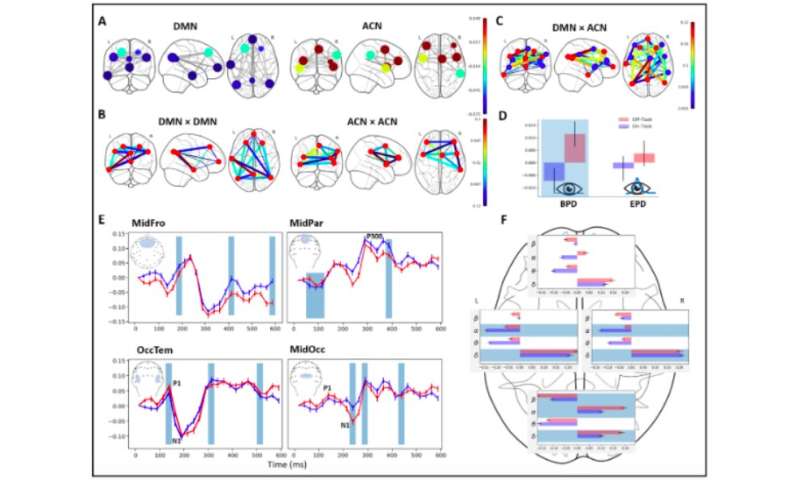
Mind wandering occurs when a person’s attention shifts from things that are happening in her present environment to internal thought processes. For instance, while cooking or attending a lesson, one might start thinking about something that happened the day before or fantasizing about something that could happen in the future.
Past neuroscience studies suggest that the task-unrelated thoughts (TUTs) associated with mind wandering can impair people’s performance on a number of tasks. While there is now a considerable amount of literature exploring the effects of mind wandering on task performance, the neural mechanisms underlying this mental process have only been partly uncovered.
Researchers at the Artic University of Norway (UiT), Leiden University and University of Oslo have recently carried out a study aimed at better understanding what happens in the brain while humans are having thoughts that are unrelated to what they are doing in the present moment. Their paper, pre-published on PsyArXiv, highlights a series of activation patterns in multiple brain regions that specifically take place during mind wandering.
To study the neural underpinnings of TUTs, the researchers recorded the brain activity of approximately 30 healthy people aged over 21 who were completing a task that required sustained attention. The task entailed responding to digits that appeared on a computer screen by pressing a button until a particular number appeared.
Occasionally, the sequence of digits was interrupted by a message asking participants where they were focusing their attention during previous trials (i.e., whether on the task or on something unrelated to the task, such as memories or other thoughts). To record the participants’ brain activity, the researchers used three techniques: functional magnetic resonance imagining (fMRI), electroencephalography (EEG) and pupillometry.
Subsequently, features that were particularly salient to mind wandering were extracted and fed to a support vector machine (SVM), a computational model trained via supervised learning methods. The analyses carried out by the computational model yielded a number of interesting results, unveiling neural activity patterns that could be associated with mind wandering in humans.
Most notably, the researchers found that the participants’ performance on the attentional task they were completing declined when their attention was focused on internal, task-unrelated trains of thoughts. Moreover, the SVM model they trained was able to predict when a participant was having task-unrelated thoughts with an average accuracy of 65%, which is above chance level. The model thus helped to unveil neural activity patterns that could be a ‘signature’ of mind wandering in humans.
“Compared to task-focused attention, the neural signature of TUTs was characterized by weaker activity in the default mode network (DMN) but elevated activity in its anticorrelated network (ACN), stronger functional coupling between these networks, widespread increase in alpha, theta, delta, but not beta, frequency power, predominantly reduced amplitudes of late, but not early, event-related potentials, and larger baseline pupil size,” the researchers wrote in their paper.
The study provides valuable insight that could improve the present understanding of what brain regions and networks are involved in mind wandering. Overall, the findings presented in their paper suggest that several neural markers characterize the shift from thoughts relevant to a task one is completing in the present to automatically generated, irrelevant thoughts.
Most notably, they highlight the involvement of ACN nodes, which have often been found to be associated with spontaneous thought processes. In addition, activity in the DMN appeared to decrease during mind wandering, which might suggest the role of this network in enhanced states of concentration. In the future, the findings gathered in this recent study could pave the way for new investigations into the neural underpinnings of mind wandering.
Source: Read Full Article